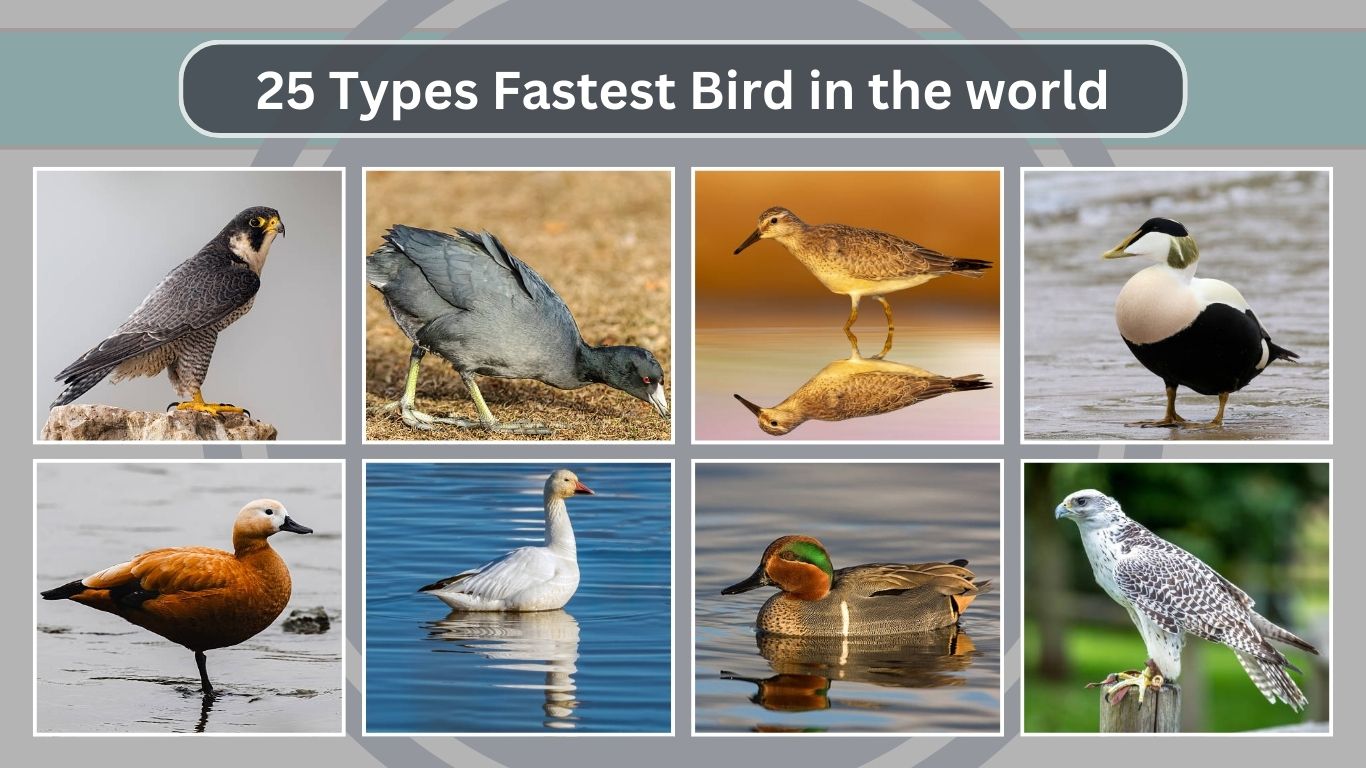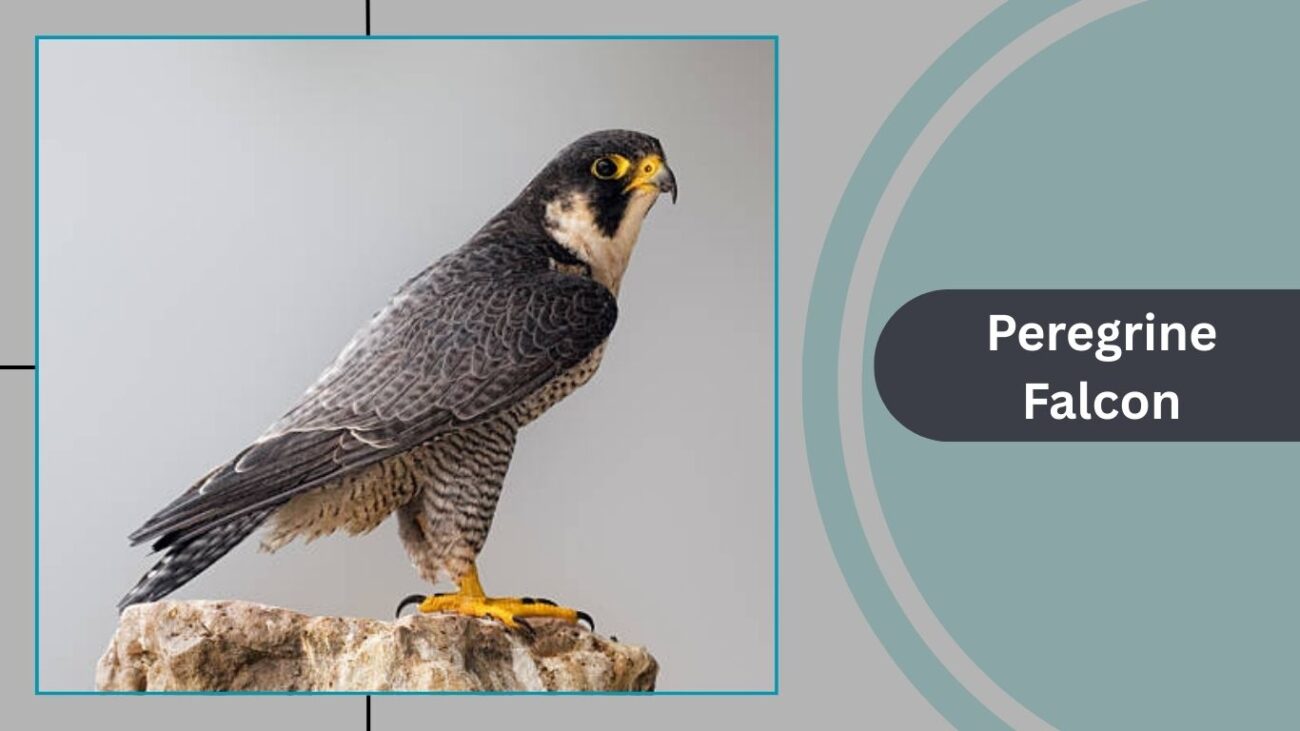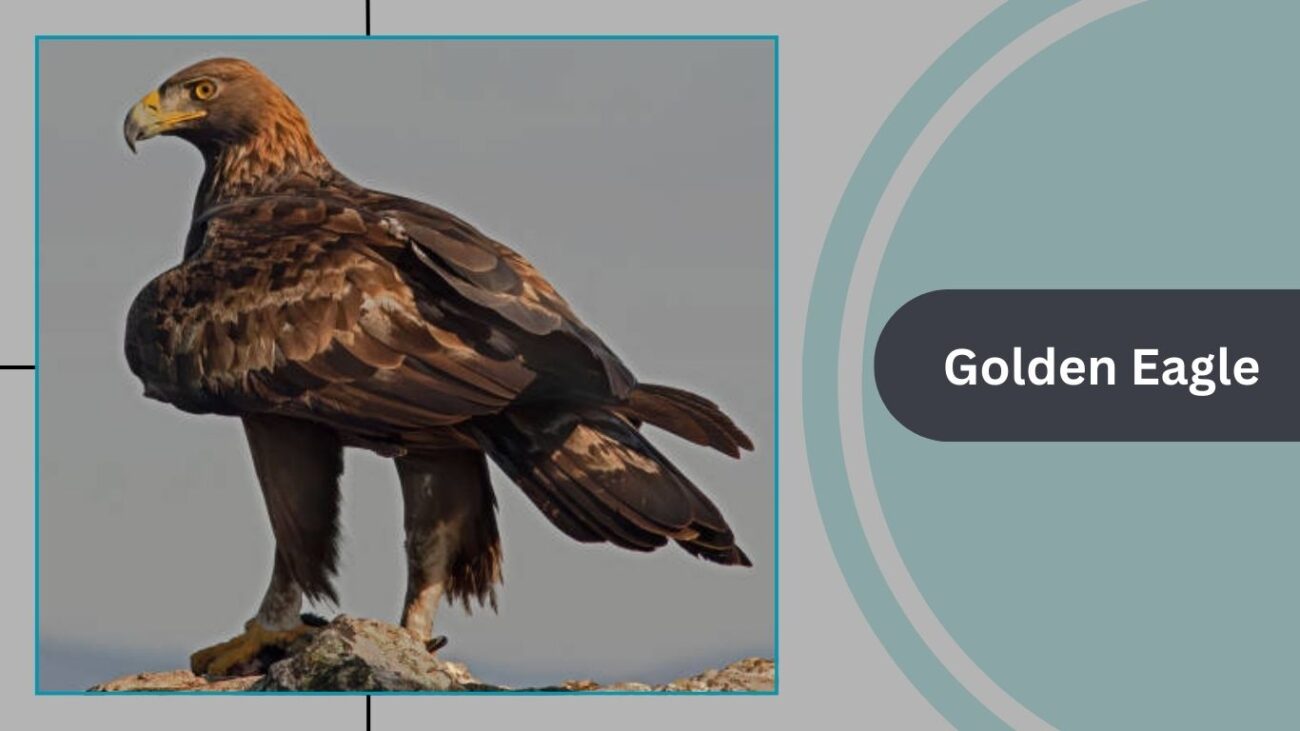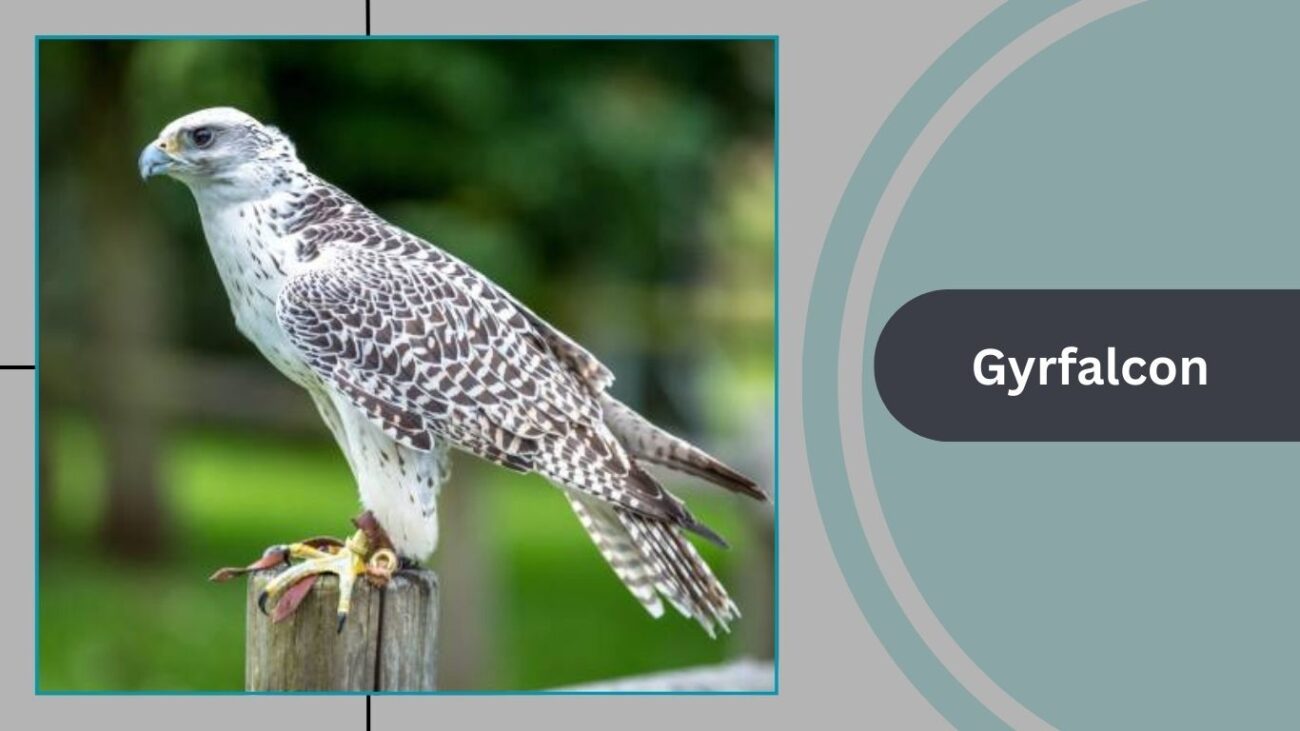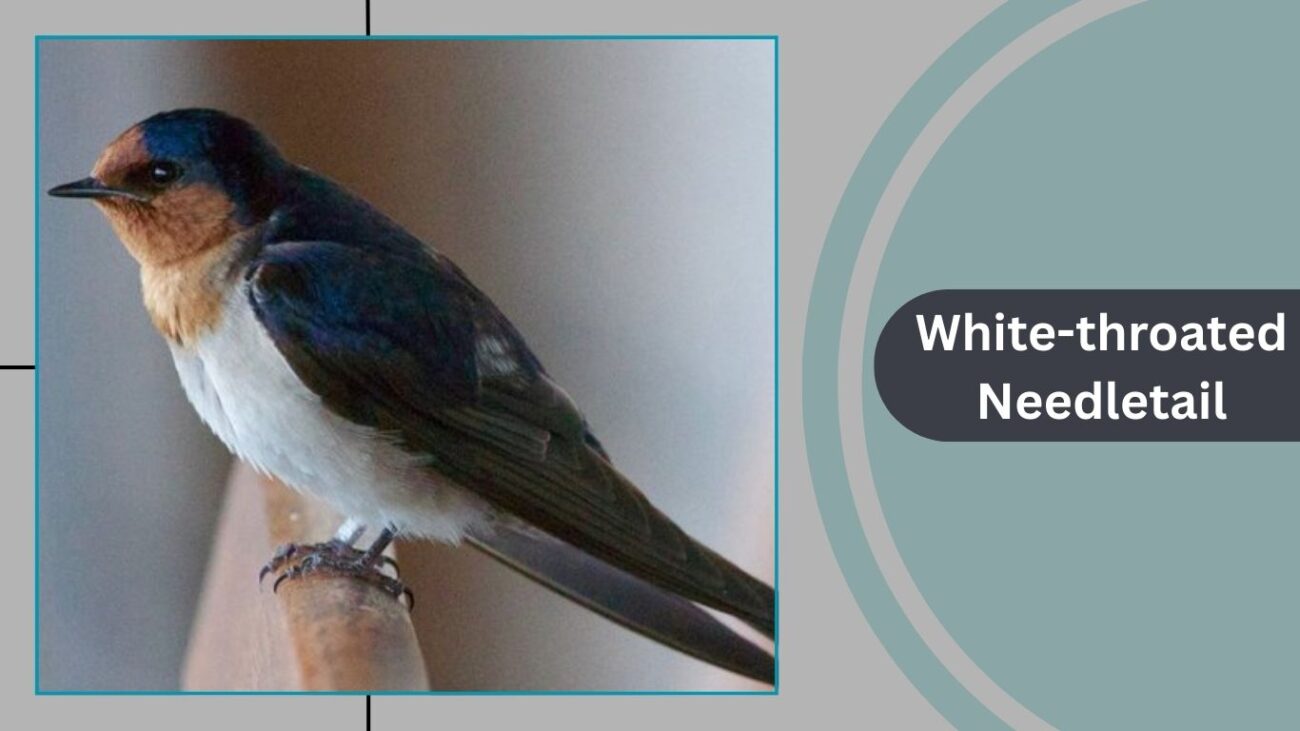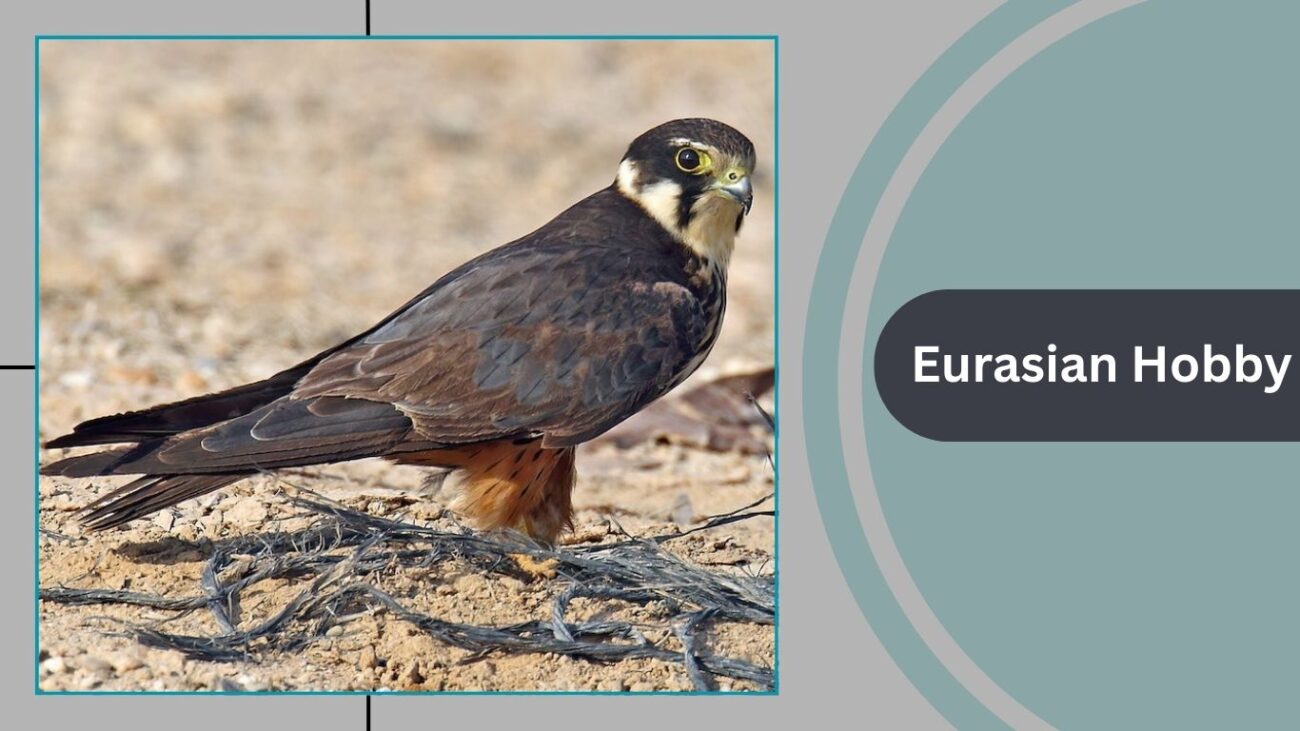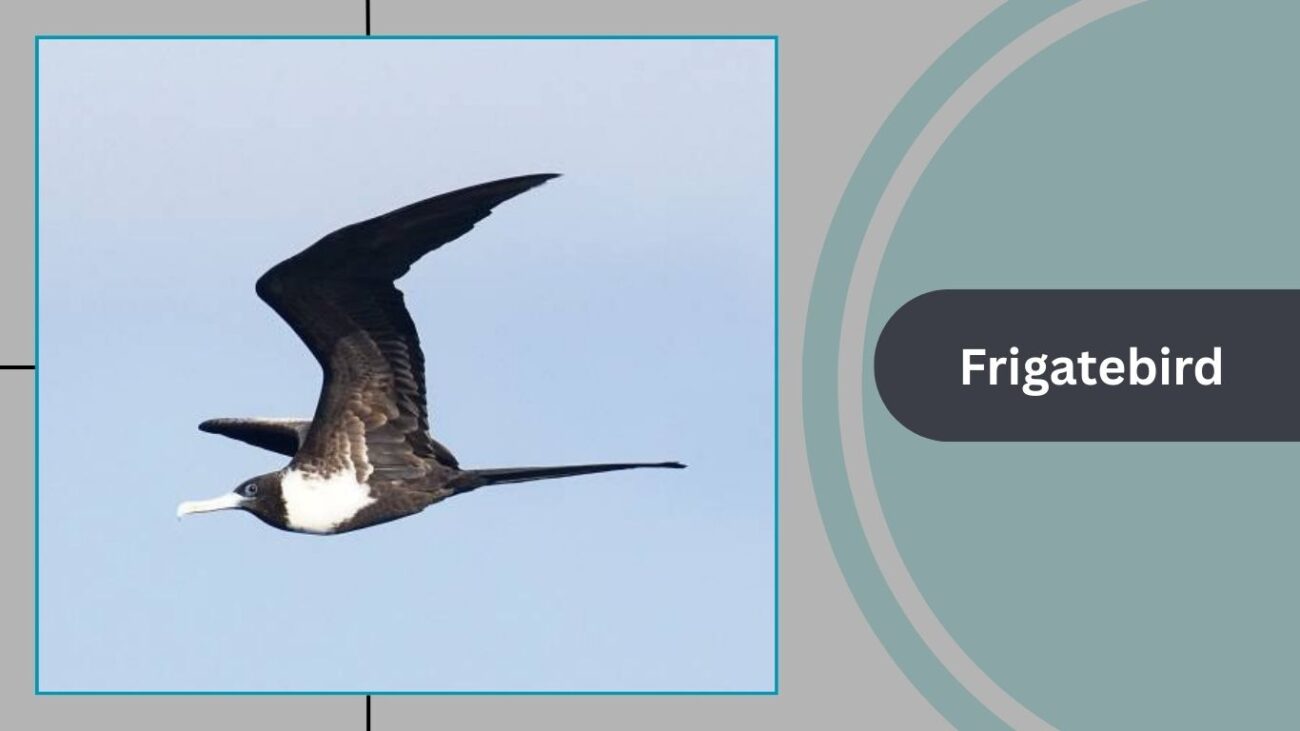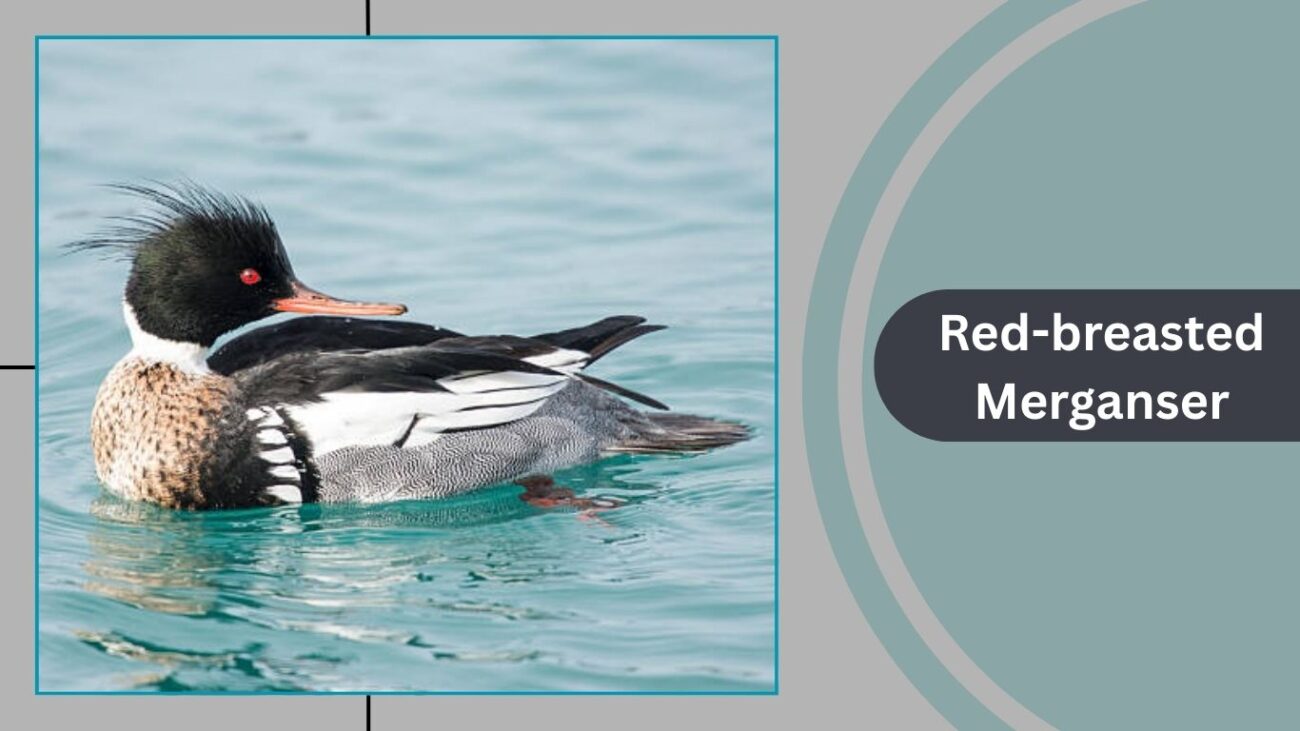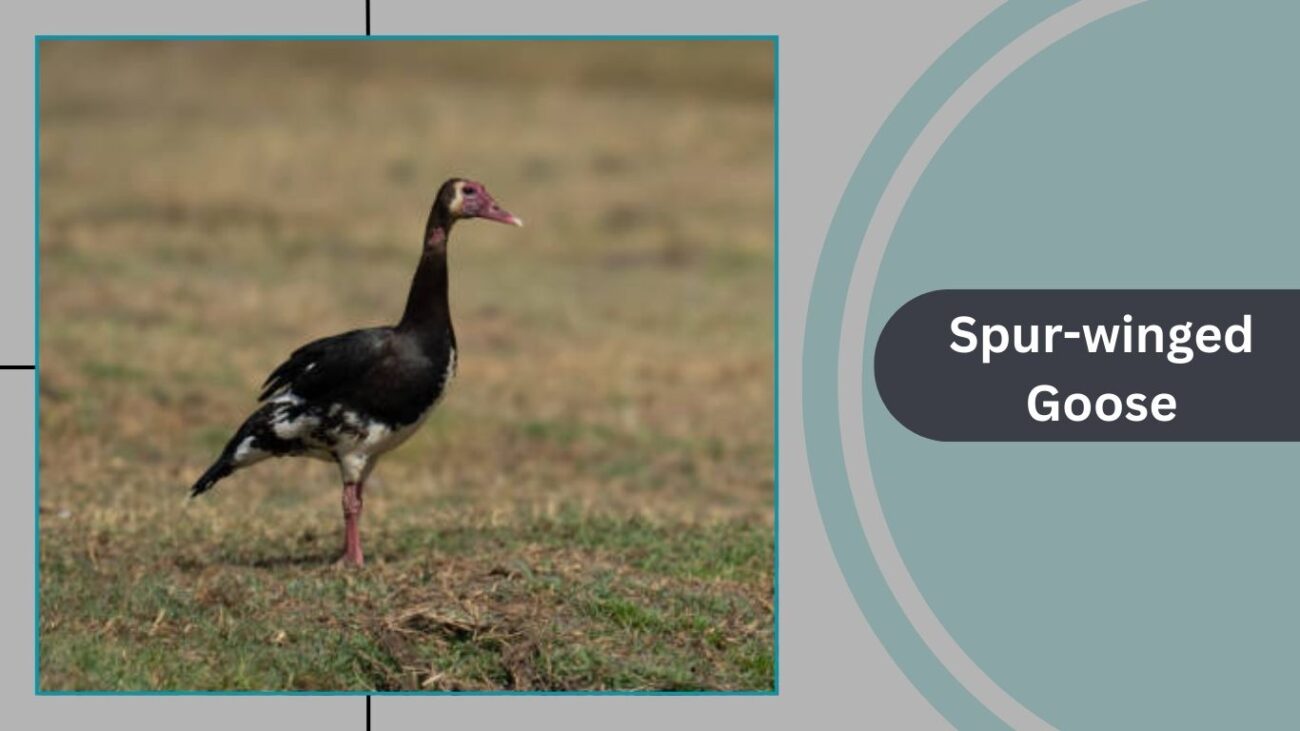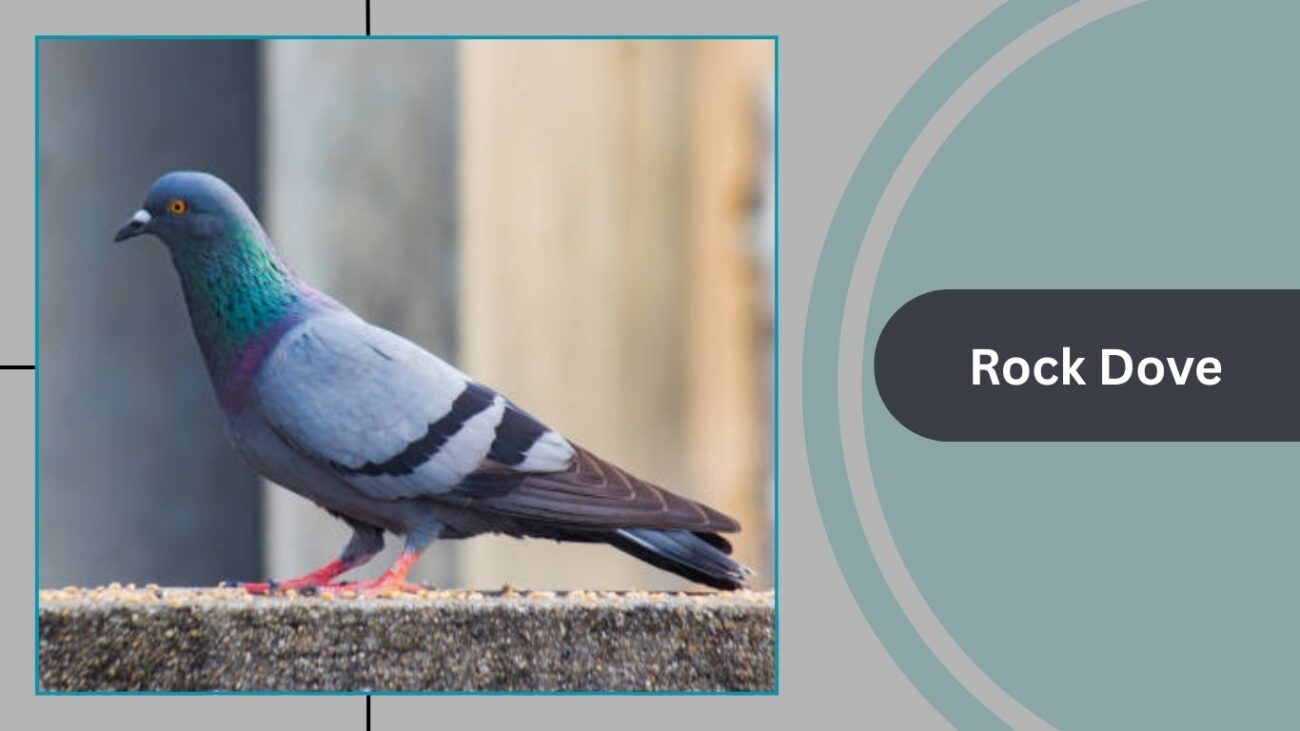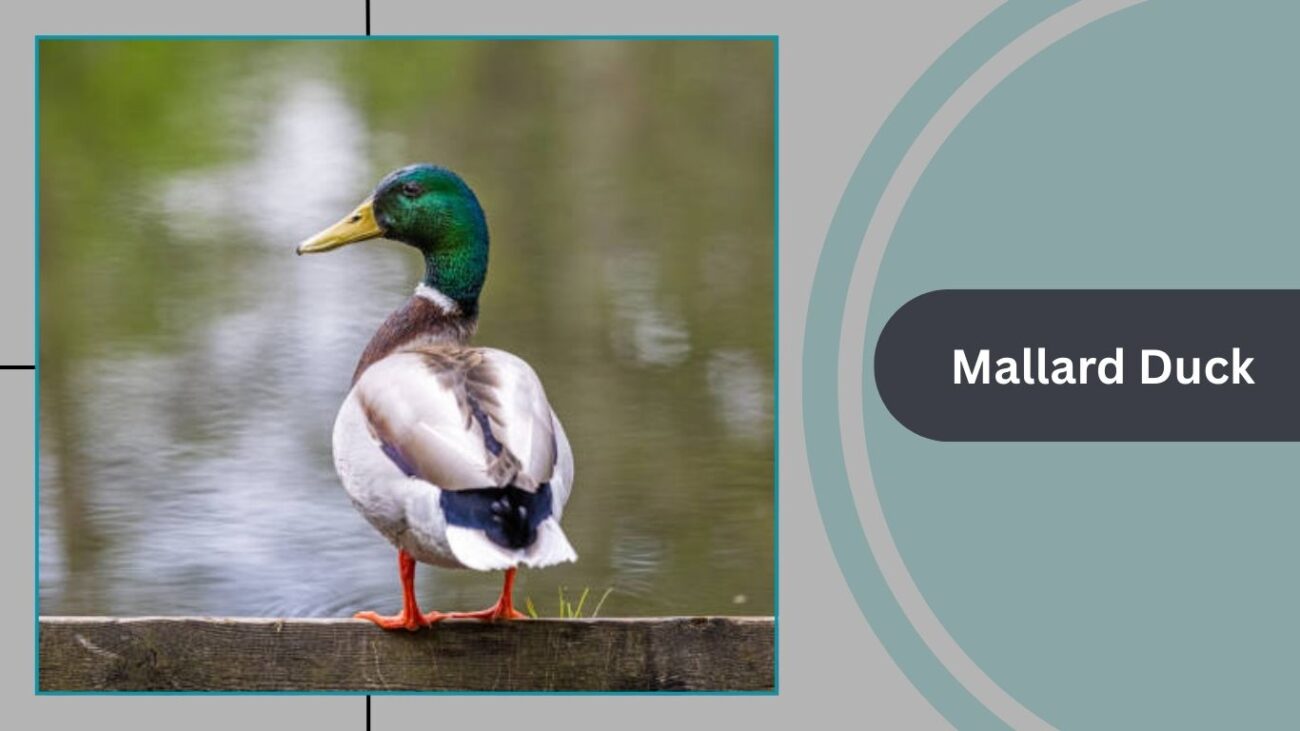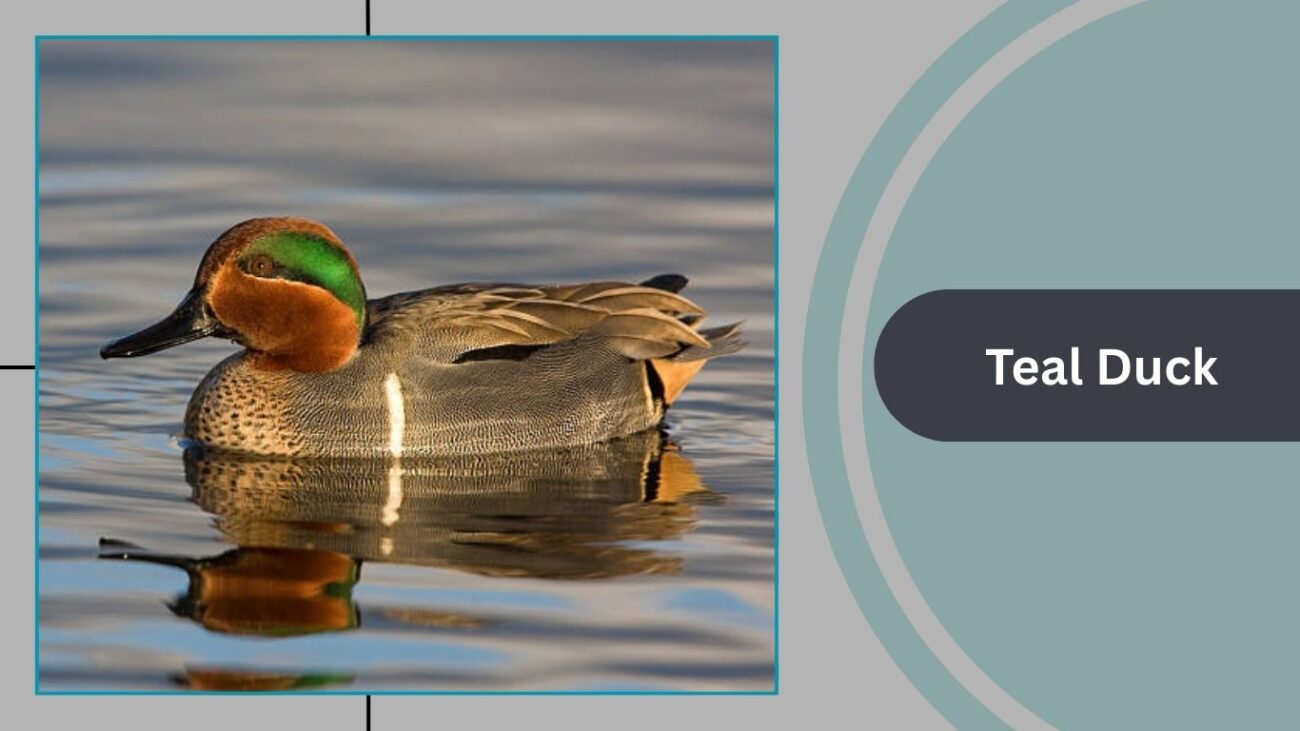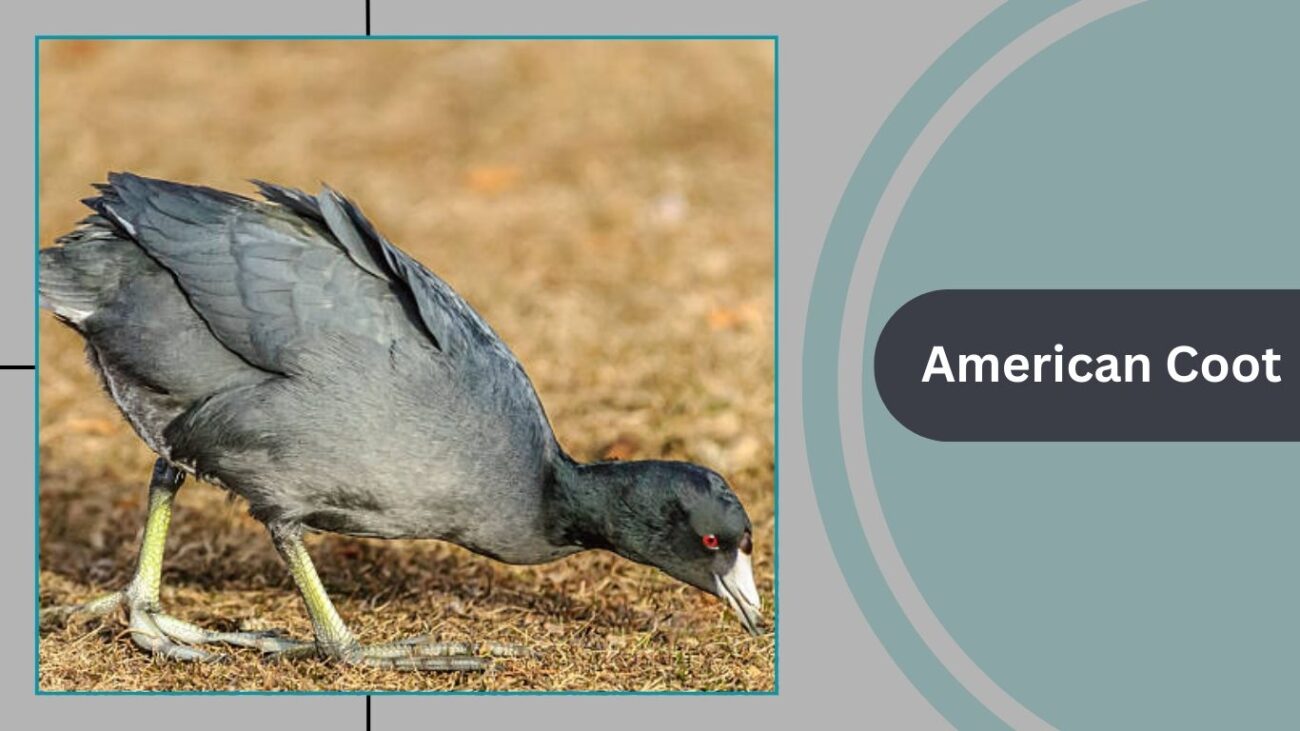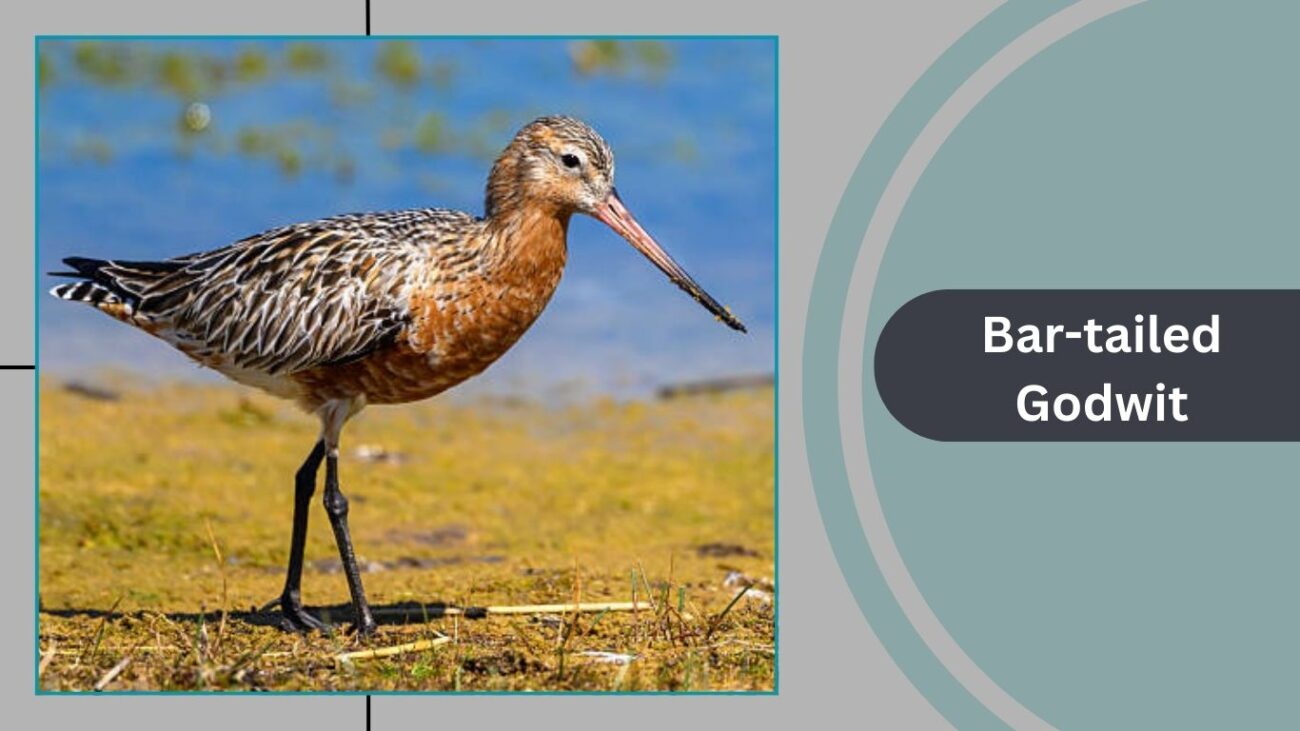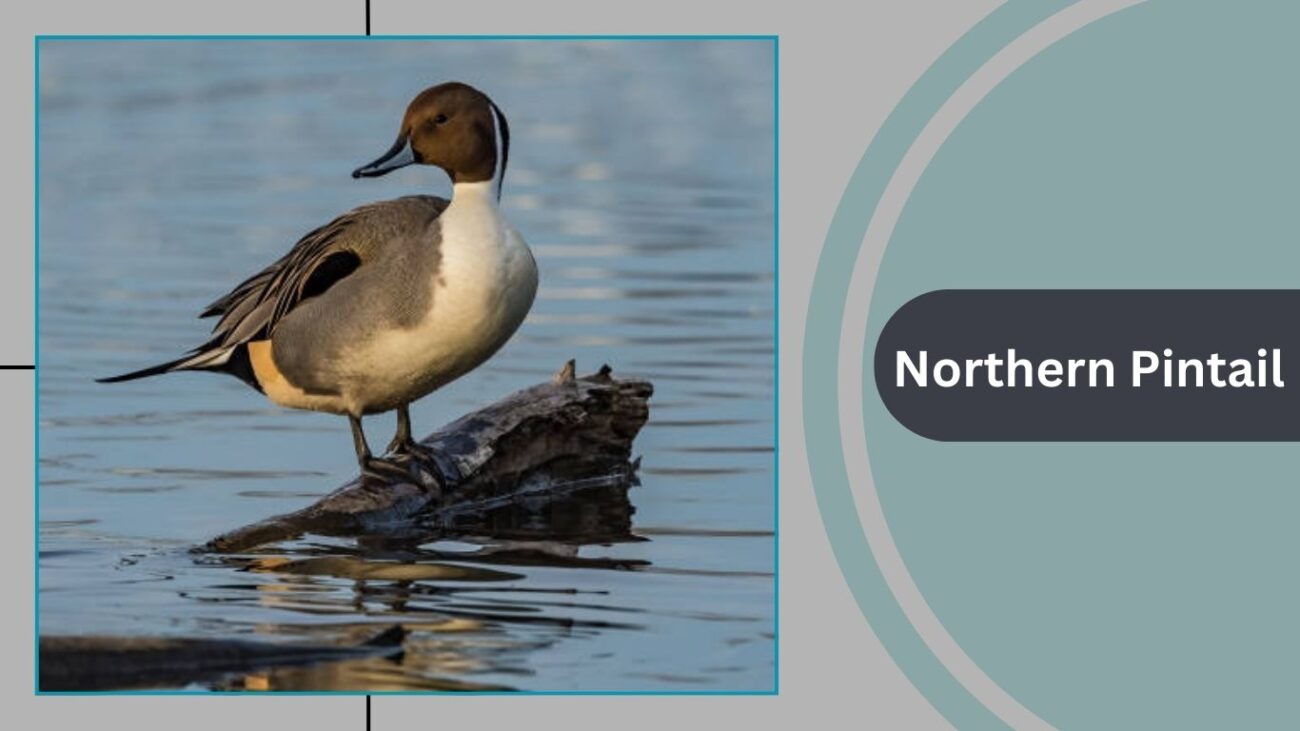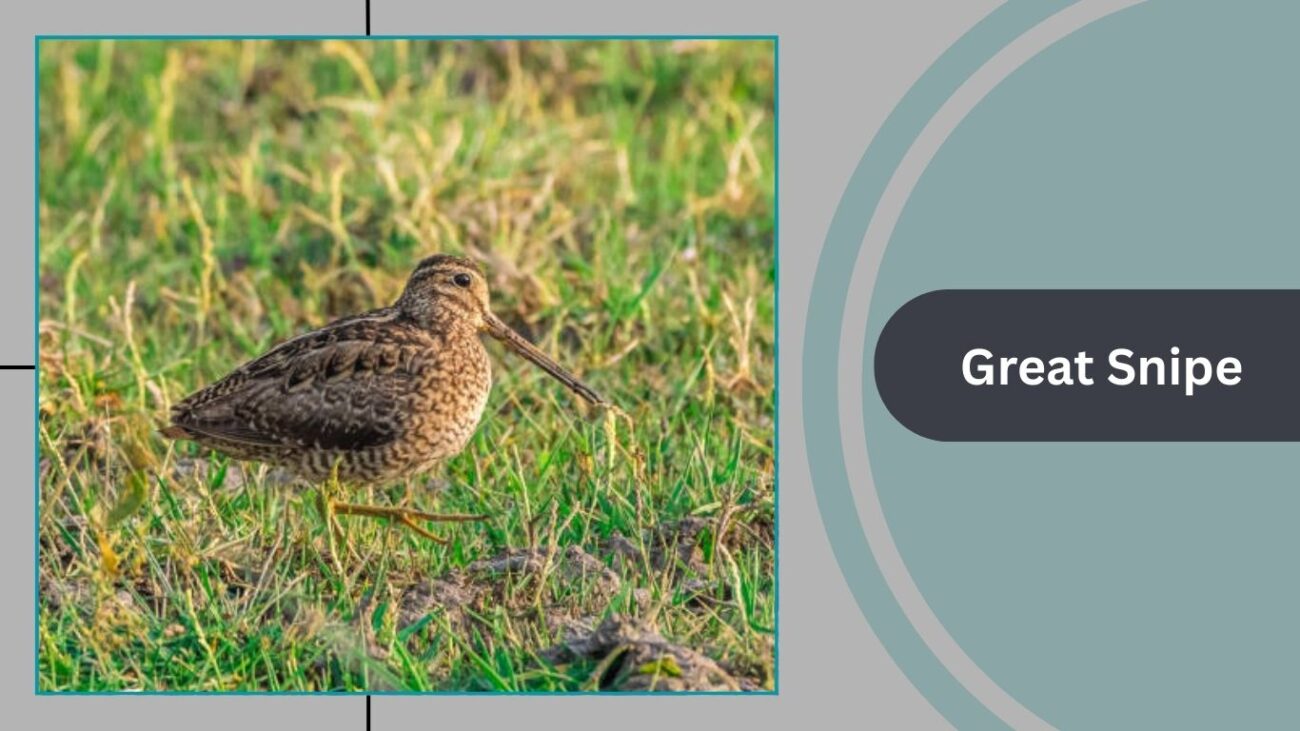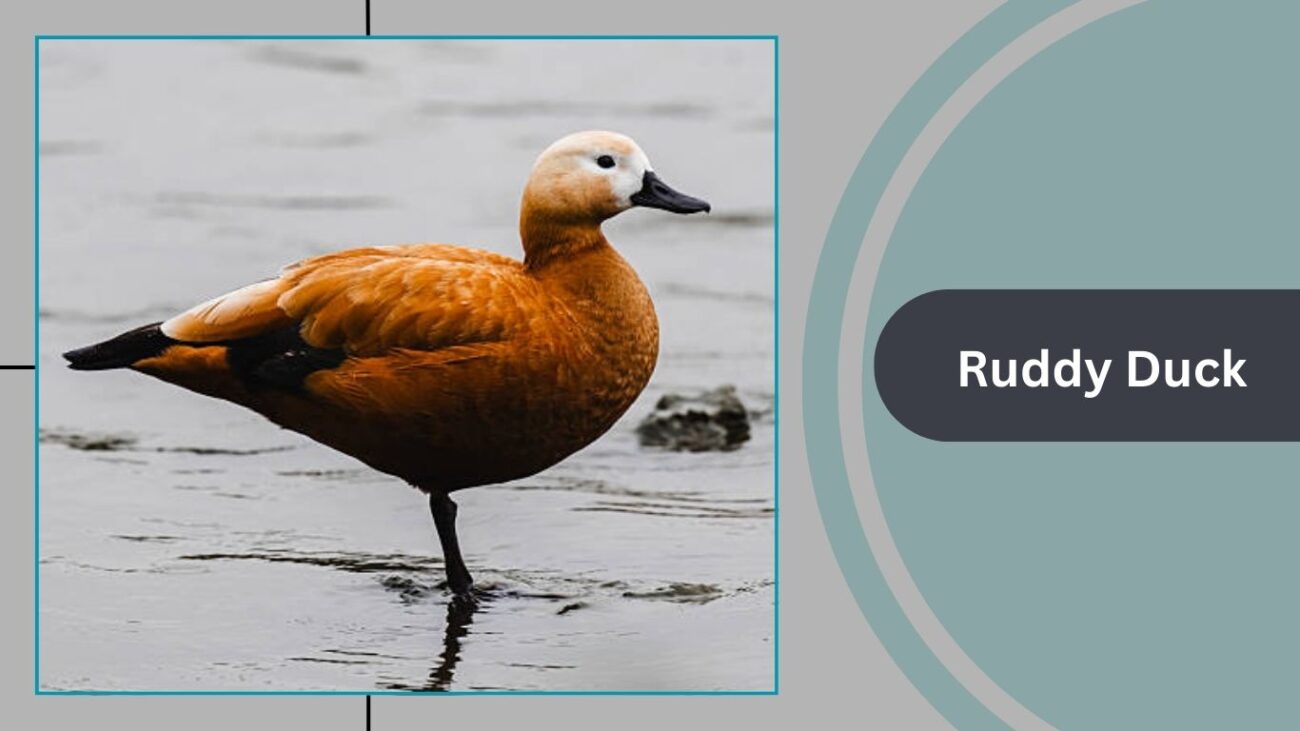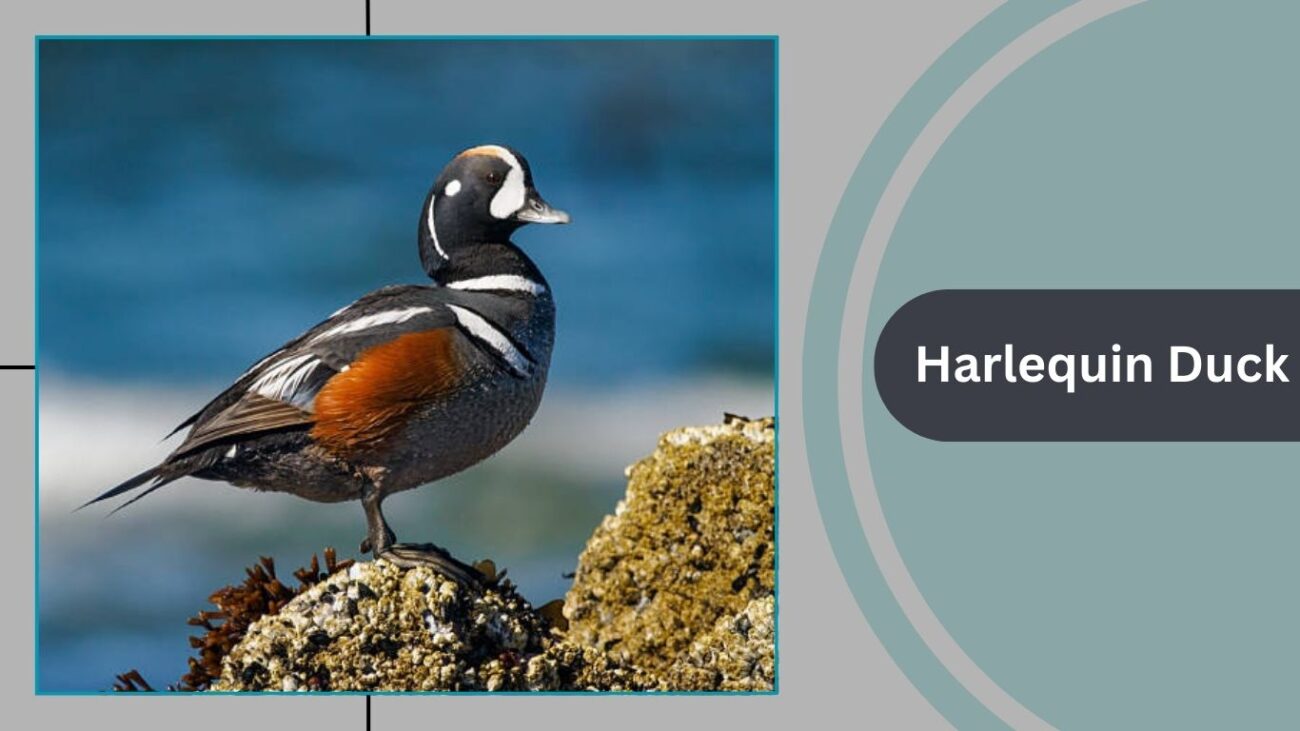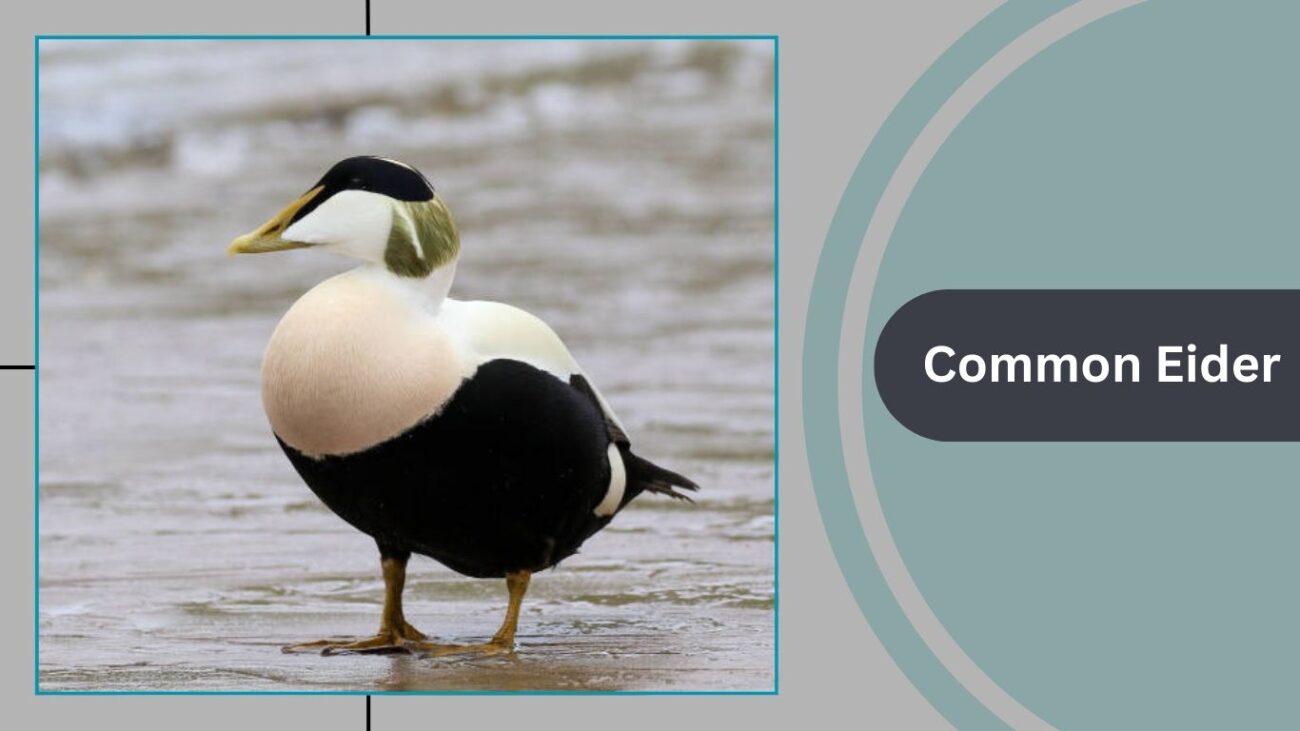Birds are nature’s masters of flight, and some species push the limits of speed with breathtaking agility and endurance. From raptors that dive at hundreds of miles per hour to waterfowl and swifts that maintain high speeds in level flight, these birds showcase incredible adaptations for survival. In this article, we’ll explore 25 of the fastest birds in the world, highlighting their unique traits, habitats, and remarkable behaviors.
1. Peregrine Falcon
The Peregrine Falcon (Falco peregrinus) is not only the fastest bird but also one of the most powerful aerial predators. Its streamlined body and strong muscles allow it to reach record-breaking speeds, making it a symbol of speed and precision in the animal kingdom. This raptor is found across the globe, from tundra and deserts to city skyscrapers, showcasing remarkable adaptability.
Identification
- Medium-sized raptor, measuring 14–19 inches in length with a wingspan of 3–3.5 feet
- Blue-gray back and wings with finely barred underparts
- White throat and cheeks contrasted by a bold black “moustache” mark
- Long, pointed wings that taper to sharp tips, aiding in high-speed flight
- Short, strong tail that assists in quick maneuvering during dives
- Sharp, hooked beak designed to tear flesh, with a unique “tooth-like” notch to sever prey’s spine
- Strong yellow legs with black talons adapted for gripping fast-moving prey
Habitat
Peregrine Falcons are among the most widely distributed raptors, inhabiting every continent except Antarctica. They thrive in open habitats such as cliffs, coastlines, mountains, and river valleys. In modern times, they have adapted to urban environments, nesting on tall skyscrapers, bridges, and towers, which mimic natural cliff ledges.
Diet
Their diet is almost exclusively composed of birds, including pigeons, doves, waterfowl, shorebirds, and even small songbirds. They rarely eat mammals or insects. The falcon hunts by soaring high and then entering a high-speed stoop, folding its wings and striking prey mid-air with enormous force, often stunning or killing it instantly.
Behavior
Peregrine Falcons are solitary hunters but may be seen in pairs during breeding season. They are fiercely territorial and return to the same nesting sites year after year, often maintaining lifelong bonds with a mate. Their courtship involves impressive aerial displays with dives, swoops, and food offerings. Peregrines are diurnal hunters, relying on keen eyesight—estimated to be eight times sharper than a human’s—to spot prey from great distances.
2. Golden Eagle
The Golden Eagle (Aquila chrysaetos) is one of the largest and most powerful birds of prey in the world. Known for its speed, strength, and sharp hunting skills, it can reach speeds of up to 200 mph (322 km/h) when diving for prey. Revered across cultures for its majesty, the Golden Eagle is a symbol of freedom and power.
Identification
- Large raptor with a wingspan of 6 to 7.5 feet and body length of 26–40 inches
- Dark brown plumage with golden feathers on the back of the head and nape
- Long, broad wings with feathered legs down to the talons
- Hooked beak, strong yellow feet, and powerful black talons
- Juveniles often have white patches at the base of wings and tail
Habitat
Golden Eagles prefer open and semi-open terrain, including mountains, plateaus, grasslands, and deserts. They are commonly found across the Northern Hemisphere, from North America and Europe to Asia and parts of North Africa. They favor cliffs and rocky outcrops for nesting, though they may also nest in tall trees.
Diet
Their diet mainly includes medium-sized mammals such as rabbits, hares, ground squirrels, and marmots. They also hunt birds, reptiles, and occasionally feed on carrion. With their immense power, they are capable of taking down larger prey like young deer and goats.
Behavior
Golden Eagles are solitary or live in pairs, especially during breeding season. They are territorial and use aerial displays to defend their range. Known for their endurance, they soar for long periods while scanning for prey. During hunting, they rely on stealth and sudden bursts of speed, often striking prey with great force using their talons. They build massive nests (called eyries) that are reused and added to each year, sometimes reaching enormous sizes.
3. Gyrfalcon
The Gyrfalcon (Falco rusticolus) is the largest falcon species in the world and one of the fastest hunters in the Arctic regions. Known for its incredible power and speed, it can reach up to 130 mph (209 km/h) in a stoop. It is highly valued for its beauty, hunting ability, and has been a prized bird in falconry for centuries.
Identification
- Largest falcon, measuring 18–26 inches in length with a wingspan of 4–5 feet
- Plumage varies widely: can be pure white, gray, brown, or blackish with streaks or barring
- Stout body with long, pointed wings and a strong, broad chest
- Distinct facial markings with a less prominent moustache compared to the Peregrine
- Powerful yellow legs with large black talons
Habitat
Gyrfalcons inhabit Arctic and sub-Arctic regions, including tundra, coastal cliffs, and mountain ranges. They are found across Greenland, Canada, Alaska, Iceland, Scandinavia, and Siberia. They prefer remote, open landscapes with plenty of prey and safe nesting cliffs.
Diet
Their diet consists mainly of medium-sized birds such as ptarmigans, ducks, gulls, and seabirds. They also take mammals like hares and lemmings when available. Unlike Peregrines that stoop from great heights, Gyrfalcons often chase prey in fast, low-level pursuits.
Behavior
Gyrfalcons are powerful and persistent hunters, capable of wearing down prey over long chases. They are territorial and remain near their nesting sites year-round, often enduring harsh Arctic winters. Courtship includes aerial displays and food offerings. They are highly devoted parents, fiercely defending their nests and young from intruders.
4. White-throated Needletail
The White-throated Needletail (Hirundapus caudacutus) is often regarded as the fastest bird in level flight, capable of reaching speeds up to 105 mph (169 km/h). Unlike falcons that rely on dives for speed, this swift maintains incredible velocity while flying horizontally. It is sometimes called the “storm-bird” and is admired for its stamina and aerial agility.
Identification
- Medium-sized swift, about 7–8 inches in length with a wingspan of 20–22 inches
- Stocky body with long, pointed wings and a short, square tail ending in sharp spines (“needletails”)
- Dark brown to blackish plumage with a contrasting white throat and rump patch
- Small, flat head with a wide mouth adapted for catching insects mid-air
Habitat
This species breeds in rocky hillsides and forests across central Asia, Siberia, and parts of China. It migrates long distances, wintering in Southeast Asia, India, and Australia. They are commonly seen flying over forests, grasslands, and even coastal areas during migration.
Diet
The White-throated Needletail feeds primarily on flying insects such as beetles, flies, and moths, which it catches on the wing. Its wide gape and rapid wingbeats make it highly efficient at insect hunting.
Behavior
Known for spending most of its life on the wing, this bird eats, drinks, and even mates in flight. It is an exceptionally fast flyer in level flight, unmatched by most other species. White-throated Needletails are also long-distance migrants, traveling thousands of miles annually between breeding and wintering grounds.
5. Eurasian Hobby
The Eurasian Hobby (Falco subbuteo) is a small but exceptionally fast falcon, capable of reaching speeds of 100 mph (160 km/h) in level flight and even faster during stoops. Agile and graceful, it is well known for its ability to catch swifts and dragonflies mid-air, making it one of the most skilled aerial hunters among falcons.
Identification
- Small falcon, about 11–15 inches in length with a wingspan of 29–36 inches
- Slate-gray back with lighter underparts streaked with dark markings
- Distinctive “moustache” stripe, though less bold than the Peregrine’s
- Reddish “trousers” on the thighs, a unique identification trait
- Long, pointed wings and slim body built for speed and maneuverability
Habitat
The Eurasian Hobby inhabits open woodlands, grasslands, wetlands, and farmlands. It breeds across Europe, Asia, and parts of Africa, often nesting in old crow or magpie nests. During winter, it migrates to sub-Saharan Africa and southern Asia.
Diet
This falcon primarily feeds on fast-flying birds such as swallows, martins, and swifts, along with large insects like dragonflies and beetles. Its hunting style is characterized by quick, darting flights and sudden chases.
Behavior
The Eurasian Hobby is a highly agile flier, capable of sharp turns and rapid dives. It hunts mostly at dawn and dusk when swifts and insects are active. During migration, it undertakes long journeys, sometimes covering thousands of miles. It is also known for its aerial courtship displays, with pairs performing synchronized flight maneuvers.
6. Frigatebird
The Frigatebird (Fregata spp.) is one of the fastest seabirds, capable of reaching speeds of around 95 mph (153 km/h) in flight. Known for its incredible aerial abilities, it can soar effortlessly for days without landing. These birds are also famous for their pirating behavior, often chasing other seabirds to steal their food.
Identification
- Large seabird with a wingspan of 7–8 feet, but a relatively light body
- Long, slender wings and a deeply forked tail that aid in agile flight
- Glossy black plumage in males with an inflatable red throat pouch used in courtship
- Females have a white breast and underbelly with dark wings and head
- Long, hooked beak designed for snatching fish and food mid-air
Habitat
Frigatebirds are found in tropical and subtropical oceans worldwide. They nest in colonies on remote islands and coastal areas but spend most of their lives soaring over open seas.
Diet
Their diet consists mainly of fish and squid, which they snatch from the ocean surface. They are also notorious kleptoparasites, harassing other seabirds like boobies until they drop or regurgitate their catch, which the Frigatebird quickly seizes.
Behavior
Frigatebirds are expert gliders, often staying aloft for days or even weeks. Unlike most seabirds, they cannot land on water due to their small, weak legs and non-waterproof feathers. They rely heavily on aerial hunting and food theft. During breeding season, males display by inflating their bright red throat pouch and clattering their bills to attract females.
7. Red-breasted Merganser
The Red-breasted Merganser (Mergus serrator) is one of the fastest-flying ducks in the world, recorded at speeds of up to 100 mph (161 km/h). Sleek and streamlined, it is a strong flier and an expert diver, adapted to both freshwater and coastal environments.
Identification
- Medium-sized diving duck, about 20–25 inches long with a wingspan of 26–29 inches
- Thin, serrated red-orange bill designed for gripping slippery fish
- Males: dark green head, spiky crest, reddish breast, and white patches on wings
- Females: gray body with a rusty-brown head and crest
- Slim, elongated body built for fast flight and efficient diving
Habitat
Red-breasted Mergansers are found across North America, Europe, and Asia. They breed in northern lakes, rivers, and coastal wetlands and winter along seacoasts, estuaries, and large inland waters.
Diet
Their diet is dominated by fish, but they also consume crustaceans, amphibians, and aquatic insects. They dive underwater to pursue prey, using their serrated bills to secure slippery catches.
Behavior
These ducks are highly energetic and excellent swimmers. They often hunt cooperatively, herding schools of fish into shallow waters. Known for their powerful wingbeats, they take off quickly from water and fly long distances during migration. Social during winter, they gather in large flocks near coasts and estuaries.
8. Spur-winged Goose
The Spur-winged Goose (Plectropterus gambensis) is the largest species of goose in the world and also among the fastest waterfowl, capable of flying at speeds up to 88 mph (142 km/h). Native to Africa, it is known for its impressive size, striking plumage, and unusual dietary habits.
Identification
- Very large bird, reaching up to 40 inches in length with a wingspan of 5–6.5 feet
- Black-and-white plumage with glossy green or purple iridescence on the wings
- Distinctive red facial skin around the beak in adults
- Named for the sharp spur on each wing, used for defense
- Long legs and strong wings suited for both flight and terrestrial movement
Habitat
The Spur-winged Goose inhabits wetlands, floodplains, rivers, and lakes throughout sub-Saharan Africa. It prefers open freshwater habitats but may also be found in agricultural fields and grasslands near water.
Diet
Its diet includes grasses, seeds, aquatic plants, and agricultural crops. Interestingly, it also consumes blister beetles, which contain toxic cantharidin, making the bird’s flesh potentially poisonous to predators and even humans.
Behavior
Spur-winged Geese are social birds, often forming flocks outside the breeding season. They are powerful flyers despite their large size and can cover long distances between feeding and roosting areas. During the breeding season, males become highly territorial and use their sharp wing spurs in fights to defend mates and nesting sites.
9. Canvasback Duck
The Canvasback Duck (Aythya valisineria) is one of the fastest flying ducks in North America, capable of reaching speeds up to 72 mph (116 km/h). Known for its sleek body and striking appearance, it is a favorite among birdwatchers and hunters alike.
Identification
- Medium-to-large diving duck, 19–22 inches long with a wingspan of 31–35 inches
- Distinctively sloping forehead and long, wedge-shaped black bill
- Males: chestnut-red head, black chest, white body, and grayish wings
- Females: pale brown body with a darker head and neck
- Streamlined body built for strong, rapid wingbeats in flight
Habitat
Canvasbacks breed in prairie potholes, marshes, and wetlands across North America, particularly in the northern U.S. and Canada. In winter, they migrate to coastal bays, estuaries, and large inland lakes.
Diet
Their diet mainly consists of aquatic vegetation, seeds, and tubers, with a preference for wild celery (Vallisneria), which gave the species its scientific name. They also consume insects, snails, and other invertebrates.
Behavior
Canvasbacks are powerful swimmers and divers, using their strong legs to propel themselves underwater in search of food. They are swift flyers, traveling long distances during migration in large flocks. Their synchronized flight formations are a common sight in wetlands and coastal regions during seasonal movements.
10. Grey-headed Albatross
The Grey-headed Albatross (Thalassarche chrysostoma) is one of the fastest long-distance fliers among seabirds, capable of reaching speeds up to 79 mph (127 km/h). Built for endurance, it spends most of its life soaring effortlessly over the open oceans, covering thousands of miles without rest.
Identification
- Large seabird with a wingspan of 6.5–7.5 feet
- Slate-gray head and neck contrasted with a white body
- Dark gray wings with a sharp black margin along the edges
- Yellow-orange bill with a darker tip, strong and hooked for grasping prey
- Streamlined body and long, narrow wings designed for dynamic soaring
Habitat
Grey-headed Albatrosses inhabit the Southern Ocean, breeding on sub-Antarctic islands such as South Georgia, Kerguelen, and Marion Island. Outside the breeding season, they range widely across the circumpolar waters of the Southern Hemisphere.
Diet
Their diet consists mainly of squid, fish, and krill, often captured at the ocean’s surface. They also scavenge behind fishing vessels, feeding on discarded bycatch.
Behavior
These albatrosses are masters of dynamic soaring, using ocean winds and waves to glide with minimal effort. They can fly thousands of miles during foraging trips, rarely flapping their wings. Grey-headed Albatrosses are monogamous and return to the same nesting colonies year after year, where they raise a single chick. They are highly aggressive around feeding grounds, competing fiercely with other seabirds.
11. Rock Dove (Pigeon)
The Rock Dove (Columba livia), commonly known as the pigeon, is not only widespread in cities but also one of the fastest flyers among birds, capable of reaching speeds up to 92 mph (148 km/h) in level flight. Domesticated pigeons, particularly racing breeds, are renowned for their speed, endurance, and remarkable navigation skills.
Identification
- Medium-sized bird, 12–14 inches long with a wingspan of 24–28 inches
- Bluish-gray body with two black wing bars and iridescent green-purple neck sheen
- Short legs, small head, and pointed wings built for swift flight
- Domesticated breeds vary in color, including white, brown, and patterned varieties
- Strong chest muscles adapted for rapid wingbeats
Habitat
Rock Doves are naturally cliff dwellers but have adapted extensively to urban environments worldwide. They thrive in cities, towns, farms, and coastal cliffs, nesting on ledges, buildings, and bridges.
Diet
Their diet consists of seeds, grains, fruits, and occasionally small invertebrates. In urban areas, they scavenge for human food scraps, displaying opportunistic feeding behavior.
Behavior
Rock Doves are highly social and often seen in large flocks. Racing pigeons demonstrate incredible homing abilities, flying hundreds of miles back to their lofts at high speed. They are strong fliers with rapid wingbeats, maintaining long flights without tiring. During courtship, males perform bowing, cooing, and wing-clapping displays to attract females.
12. Common Swift
The Common Swift (Apus apus) is one of the most remarkable aerial birds, capable of flying at speeds up to 70 mph (113 km/h) in level flight. Known for spending the majority of its life in the air, this bird eats, sleeps, and even mates while flying, making it one of the most aerially adapted species in the world.
Identification
- Medium-sized swift, about 6.5 inches long with a wingspan of 15–17 inches
- Dark brown plumage overall, often appearing black in flight
- Crescent-shaped wings that are long and narrow, perfect for gliding at high speeds
- Short, forked tail and small, streamlined body
- Tiny beak with a wide gape adapted for catching flying insects
Habitat
Common Swifts breed across Europe and Asia, favoring towns, cities, cliffs, and old buildings for nesting. They migrate long distances to sub-Saharan Africa for winter, traveling thousands of miles each year.
Diet
They feed exclusively on flying insects and airborne spiders, catching them on the wing. Swifts often hunt in flocks, feeding at high altitudes where insects are abundant.
Behavior
True masters of the sky, Common Swifts spend almost their entire lives airborne, landing only to breed. They are highly social, flying in groups and producing high-pitched screams during flight. During migration, they cover enormous distances at great speed, displaying unmatched aerial endurance.
13. Mallard Duck
The Mallard Duck (Anas platyrhynchos) is one of the most common and widespread duck species in the world. Known for its adaptability and strong flying ability, it can reach flight speeds of around 55–60 mph (89–97 km/h), making it one of the faster waterfowl.
Identification
- Medium-sized duck, 20–26 inches long with a wingspan of 32–39 inches
- Males: glossy green head, yellow bill, white neck ring, chestnut breast, and gray body
- Females: mottled brown plumage with orange-and-brown bills, providing camouflage
- Both sexes have a distinctive blue wing patch (speculum) edged in white
- Sturdy body with broad wings designed for fast, sustained flight
Habitat
Mallards are highly adaptable and found across North America, Europe, Asia, and parts of Africa. They thrive in freshwater lakes, ponds, rivers, marshes, and urban water bodies. They also occupy coastal estuaries and wetlands during migration.
Diet
Their diet is omnivorous, including aquatic plants, seeds, insects, crustaceans, and small fish. In urban areas, they are often seen feeding on human-provided food like bread and grains.
Behavior
Mallards are strong fliers, capable of covering long distances during migration. They are also social and often gather in large flocks, particularly outside the breeding season. Courtship involves elaborate displays such as head-pumping and synchronized swimming. Their adaptability has made them one of the most successful waterfowl species globally.
14. Teal Duck
The Teal Duck refers to several small, fast-flying dabbling ducks, with the Common Teal (Anas crecca) being one of the most widespread. Despite their small size, Teals are powerful fliers and can reach speeds of around 60 mph (97 km/h). They are known for their agility in flight, often maneuvering rapidly in tight flocks.
Identification
- Small dabbling duck, 14–16 inches long with a wingspan of 20–24 inches
- Males: chestnut-colored head with a striking green eye patch, gray body, and black-bordered yellow undertail
- Females: mottled brown plumage with a more subdued pattern for camouflage
- Both sexes have a green speculum on the wings, visible in flight
- Compact body and pointed wings built for speed and maneuverability
Habitat
Teal Ducks breed in northern Europe, Asia, and North America, favoring shallow wetlands, marshes, ponds, and river floodplains. In winter, they migrate southward, often found in estuaries, lagoons, and coastal wetlands.
Diet
Their diet consists mainly of seeds, aquatic plants, and small invertebrates. They dabble at the water’s surface or tip their bodies to reach submerged vegetation and invertebrates.
Behavior
Teal Ducks are highly social, especially during migration and winter, forming large, fast-moving flocks. They are agile in the air, performing sudden twists and turns to avoid predators. During breeding season, males display courtship behaviors such as whistling calls and synchronized wing flapping.
15. Red Knot
The Red Knot (Calidris canutus) is a medium-sized shorebird famous for its long migratory journeys and strong flying ability, reaching speeds of about 50–55 mph (80–88 km/h). It undertakes one of the longest migrations of any bird, traveling up to 9,000 miles each way between breeding and wintering grounds.
Identification
- Medium-sized sandpiper, 9–11 inches long with a wingspan of 19–21 inches
- Breeding plumage: reddish chest, face, and belly with mottled brown upperparts
- Non-breeding plumage: grayish back and white underparts
- Short, straight black bill and dark legs
- Compact, streamlined body adapted for endurance flight
Habitat
Red Knots breed in the Arctic tundra of Canada, Greenland, and Siberia. They migrate south to winter along coastlines in South America, Africa, Europe, and Australasia. Their habitats include tidal mudflats, estuaries, sandy beaches, and salt marshes.
Diet
Their diet changes with the seasons: during migration and winter, they feed mainly on mollusks, crustaceans, and marine worms. In breeding grounds, they consume insects, larvae, and plant matter.
Behavior
Red Knots are renowned for their long-distance migrations, flying in tightly coordinated flocks. They rely on stopover sites rich in food, such as Delaware Bay in the U.S., where they gorge on horseshoe crab eggs to fuel their journeys. Social and highly synchronized in flight, they often perform rapid, twisting maneuvers to evade predators.
16. American Coot
The American Coot (Fulica americana) is a fast-flying waterbird that can reach speeds of around 60 mph (97 km/h) in flight. Although it resembles a duck, it belongs to the rail family and is well adapted for both swimming and strong, direct flight.
Identification
- Medium-sized bird, about 13–17 inches long with a wingspan of 23–28 inches
- Dark gray to black plumage with a distinctive white bill and forehead shield
- Red eyes and greenish legs with lobed (not webbed) toes for swimming
- Compact body with short, rounded wings
- Unlike ducks, its flight requires rapid wingbeats for sustained speed
Habitat
American Coots are widespread across North America, inhabiting freshwater lakes, ponds, marshes, and slow-moving rivers. They also occupy coastal bays and estuaries during migration and winter.
Diet
Their diet includes aquatic plants, algae, seeds, and small invertebrates. They often dive or dabble for vegetation and may also forage along shorelines. Opportunistically, they sometimes steal food from other waterbirds.
Behavior
Coots are social birds, often forming large flocks in winter. Though awkward at takeoff, once airborne they are swift and direct flyers. They are aggressive and territorial during breeding season, frequently chasing intruders with loud calls and splashing displays. Their unique lobed toes make them excellent swimmers and divers.
17. Bar-tailed Godwit
The Bar-tailed Godwit (Limosa lapponica) is a remarkable shorebird known for its long-distance migrations and impressive flight speed, reaching around 55 mph (88 km/h). It holds the record for the longest nonstop flight of any bird, covering over 7,000 miles without resting.
Identification
- Medium-to-large shorebird, 15–16 inches long with a wingspan of 28–31 inches
- Long, slightly upturned pink bill with a dark tip
- Breeding plumage: reddish-brown chest and underparts with mottled upperparts
- Non-breeding plumage: grayish-brown body with white belly
- Distinctive barred tail, which gives the species its name
Habitat
Bar-tailed Godwits breed in Arctic tundra regions of Scandinavia, Siberia, and Alaska. During migration, they use coastal wetlands, estuaries, and mudflats as stopovers. Their wintering grounds stretch across Europe, Africa, South Asia, Australia, and New Zealand.
Diet
Their diet consists mainly of marine invertebrates such as worms, mollusks, and crustaceans, which they probe from mudflats with their long bills. During breeding, they also feed on insects and plant material.
Behavior
Bar-tailed Godwits are among the greatest endurance fliers, traveling vast distances without stopping. They migrate in flocks, flying at high altitudes and maintaining steady speeds for thousands of miles. Outside breeding season, they are highly social, often feeding in large groups in coastal areas.
18. Northern Pintail
The Northern Pintail (Anas acuta) is a graceful dabbling duck renowned for its slim body, long neck, and fast, direct flight, reaching speeds of up to 65 mph (105 km/h). Its elegance in the air and on the water makes it one of the most distinctive migratory ducks.
Identification
- Medium-to-large duck, 20–26 inches long with a wingspan of 34–39 inches
- Males: chocolate-brown head, white neck stripe, gray body, and long pointed tail feathers
- Females: mottled brown plumage with a more subdued pattern for camouflage
- Both sexes: slender body, long wings, and sharp pointed tail, giving a streamlined appearance
- Blue-gray bill and legs adapted for dabbling
Habitat
Northern Pintails are widespread across the Northern Hemisphere. They breed in open wetlands, marshes, prairie potholes, and tundra regions of North America, Europe, and Asia. In winter, they migrate to southern U.S., Central and South America, Africa, and South Asia, favoring shallow lakes, estuaries, and flooded fields.
Diet
Their diet includes seeds, aquatic plants, grains, and small invertebrates. They are dabblers, often tipping forward in the water to reach submerged vegetation, but they also forage in fields for grains during migration and winter.
Behavior
Northern Pintails are strong, agile fliers with fast wingbeats, often seen migrating in large flocks. They are wary and quick to take flight when disturbed, flying in graceful, streamlined formations. Males display elaborate courtship behaviors, including whistle-like calls and head-dipping. Social outside the breeding season, they often mix with other duck species in wintering grounds.
19. Snow Goose
The Snow Goose (Anser caerulescens) is a strong, fast-flying migratory bird that can reach speeds of around 50–60 mph (80–97 km/h). Known for its striking plumage and loud calls, it migrates in large flocks, creating impressive spectacles across North America.
Identification
- Medium-to-large goose, 27–33 inches long with a wingspan of 53–65 inches
- Two color morphs:
- White morph: all white with black wingtips
- Blue morph: bluish-gray body with a white head
- White morph: all white with black wingtips
- Pink bill with a dark “grinning patch” and pink legs
- Long neck and broad wings adapted for sustained flight
Habitat
Snow Geese breed in the Arctic tundra of Canada, Alaska, and Greenland. During winter, they migrate south to the United States and Mexico, favoring coastal marshes, estuaries, wetlands, and agricultural fields.
Diet
Their diet includes grasses, sedges, grains, and roots. They often forage in large groups, grazing in fields or digging up roots with their bills. They also feed on aquatic vegetation in wetlands.
Behavior
Snow Geese are highly social and travel in massive flocks during migration, often forming V-shaped or wavy flight formations. Their loud, honking calls can be heard from great distances. They are strong, steady fliers, capable of covering thousands of miles during seasonal migrations.
20. Great Snipe
The Great Snipe (Gallinago media) is a remarkable wader known for both its fast, direct flight and its long migratory journeys. It has been recorded flying at speeds of around 60 mph (97 km/h) and can cover thousands of miles nonstop during migration, making it one of the most enduring flyers among shorebirds.
Identification
- Medium-sized wader, 10–12 inches long with a wingspan of 18–21 inches
- Mottled brown and buff plumage with cryptic patterns for camouflage in grasslands
- Long, straight bill adapted for probing soil for invertebrates
- White belly with barred flanks and relatively short legs compared to other snipes
- Strong, pointed wings designed for fast, direct flight
Habitat
Great Snipes breed in wet meadows, bogs, and grasslands in Eastern Europe and parts of Russia. During migration, they travel to sub-Saharan Africa, favoring wetlands, grassy savannas, and agricultural areas as stopover or wintering grounds.
Diet
Their diet mainly consists of insects, earthworms, and other small invertebrates, which they probe from soft soil with their sensitive bills. They also eat seeds and plant material when available.
Behavior
Great Snipes are elusive and secretive on the ground, relying on camouflage to avoid predators. In flight, however, they are swift and direct, often taking off suddenly when disturbed. They are famous for their lekking courtship displays, where males gather in groups and perform jumping and wing-flapping rituals to attract females. During migration, they are capable of long, nonstop flights at impressive speeds.
21. Black Scoter
The Black Scoter (Melanitta americana) is a fast and powerful sea duck, capable of reaching speeds of around 60 mph (97 km/h) during flight. It is one of the less colorful sea ducks but is known for its strong migratory flights across coastal waters.
Identification
- Medium-sized sea duck, 17–21 inches long with a wingspan of 30–35 inches
- Males: entirely black plumage with a distinctive swollen orange knob at the base of the bill
- Females: brownish overall with pale cheeks and a darker crown and throat
- Compact, stocky body with short neck and sturdy wings
- Streamlined shape built for both diving and strong, fast flight
Habitat
Black Scoters breed in freshwater lakes and ponds of the northern boreal forests and tundra across Alaska, Canada, and Siberia. In winter, they migrate to coastal bays, estuaries, and open sea along the Atlantic and Pacific coasts.
Diet
Their diet consists mainly of mollusks, crustaceans, and aquatic insects, as well as small fish and plant material. They are excellent divers, often foraging at depths to catch clams and mussels.
Behavior
Black Scoters are strong, direct fliers often seen in tight flocks over the sea. During migration and winter, they form large rafts on coastal waters. Males produce distinctive whistling calls during courtship displays, and flocks can be noisy when gathered in large numbers. They are highly social outside the breeding season but become territorial when nesting.
22. Ruddy Duck
The Ruddy Duck (Oxyura jamaicensis) is a small, stiff-tailed duck known for its strong flight, capable of speeds around 50–55 mph (80–88 km/h). Though compact in size, it is a determined flyer and diver, well adapted for both aquatic and aerial life.
Identification
- Small duck, 13–16 inches long with a wingspan of 22–24 inches
- Males in breeding season: bright chestnut body, sky-blue bill, and blackish head with a white cheek patch
- Females and non-breeding males: dull brownish-gray with a dark cap and pale cheek stripe
- Distinctive stiff tail often held upright when swimming
- Short wings but very rapid wingbeats in flight
Habitat
Ruddy Ducks breed in marshes, ponds, and lakes across North America. They prefer wetlands with dense vegetation for nesting. During winter, they migrate to southern U.S., Central America, and the Caribbean, inhabiting lakes, reservoirs, and coastal lagoons.
Diet
Their diet consists mainly of aquatic invertebrates, including insects, larvae, crustaceans, and small mollusks. They also consume seeds and aquatic plants, diving frequently to forage underwater.
Behavior
Ruddy Ducks are energetic and active, often diving to escape danger rather than taking flight. However, when migrating, they fly swiftly and directly, covering long distances efficiently. Males are known for their unusual courtship display, where they beat their chest with their bill to create bubbles in the water while raising their stiff tail.
23. Harlequin Duck
The Harlequin Duck (Histrionicus histrionicus) is a small sea duck admired for its striking plumage and powerful flight, capable of reaching speeds of around 50 mph (80 km/h). It thrives in fast-moving waters and is well adapted to turbulent coastal and river habitats.
Identification
- Small duck, 15–17 inches long with a wingspan of 26–28 inches
- Males: slate-blue plumage with bold white spots and chestnut markings on the sides and flanks
- Females: brownish-gray overall with small white patches around the eyes
- Compact, rounded body with strong wings designed for agile flight
- Short tail and stout bill adapted for diving
Habitat
Harlequin Ducks breed along fast-flowing streams and rivers in northern North America, Greenland, Iceland, and eastern Russia. In winter, they migrate to rocky coastlines, bays, and turbulent coastal waters.
Diet
Their diet includes aquatic invertebrates such as snails, crustaceans, insects, and mollusks. They dive and forage along riverbeds and rocky coastal zones, often clinging to strong currents while feeding.
Behavior
Harlequin Ducks are strong, direct fliers and are often seen flying low over turbulent waters. They are excellent divers and use their wings to propel themselves underwater. Outside of the breeding season, they form small flocks along rocky coasts. Their courtship involves elaborate displays, with males performing head-shaking and vocal calls to attract females.
24. Common Eider
The Common Eider (Somateria mollissima) is the largest duck in the Northern Hemisphere and a strong, fast flier, capable of reaching speeds around 65–70 mph (105–113 km/h). It is best known for producing eiderdown, the soft insulating feathers used in high-quality bedding.
Identification
- Large sea duck, 20–28 inches long with a wingspan of 31–43 inches
- Males: striking black-and-white plumage with a pale green nape and long sloping bill
- Females: mottled brown plumage, providing camouflage while nesting
- Heavy body but long, pointed wings for powerful flight
- Distinctive wedge-shaped head and long bill
Habitat
Common Eiders breed in Arctic and northern temperate coastal regions, nesting on rocky islands, tundra, and beaches. In winter, they gather in large flocks along northern seacoasts, bays, and estuaries.
Diet
Their diet consists mainly of marine mollusks, particularly mussels, which they swallow whole. They also feed on crustaceans, sea urchins, and small fish, diving underwater to forage along the seafloor.
Behavior
Common Eiders are strong fliers despite their heavy build, often flying low over the water in fast, direct lines. They are highly social, forming large rafts of thousands of birds during winter. Females are known for cooperative nesting, sometimes caring for young in shared groups called “crèches.” Their fast flight and endurance make them efficient migrants between breeding and wintering grounds.
25. Long-tailed Duck
The Long-tailed Duck (Clangula hyemalis) is a small but hardy sea duck, known for its speed and agility in flight, reaching up to 60 mph (97 km/h). It is also an exceptional diver, capable of plunging to depths of over 200 feet in search of food.
Identification
- Small sea duck, 16–20 inches long with a wingspan of 28–30 inches
- Males: striking plumage that changes seasonally — in winter, mostly white with dark wings and a long central tail feather; in summer, darker with mottled patterns
- Females: brownish overall with shorter tails and more subdued coloration
- Compact body with short wings adapted for rapid wingbeats
- Distinctive long tail in males gives the species its name
Habitat
Long-tailed Ducks breed in Arctic tundra regions near lakes, ponds, and coastal wetlands. In winter, they migrate to northern oceans, often found in bays, estuaries, and offshore waters along both the Atlantic and Pacific coasts.
Diet
Their diet consists mainly of aquatic invertebrates such as crustaceans, mollusks, and insect larvae. They are also known to eat small fish and plant matter. Skilled divers, they forage at great depths compared to most other ducks.
Behavior
Long-tailed Ducks are active, fast fliers with rapid wingbeats, often flying low over water in small flocks. They are vocal birds, producing yodeling calls, especially in winter. Highly social outside the breeding season, they form large groups in coastal waters. Their diving ability and fast flight make them well adapted to life in harsh northern environments.

